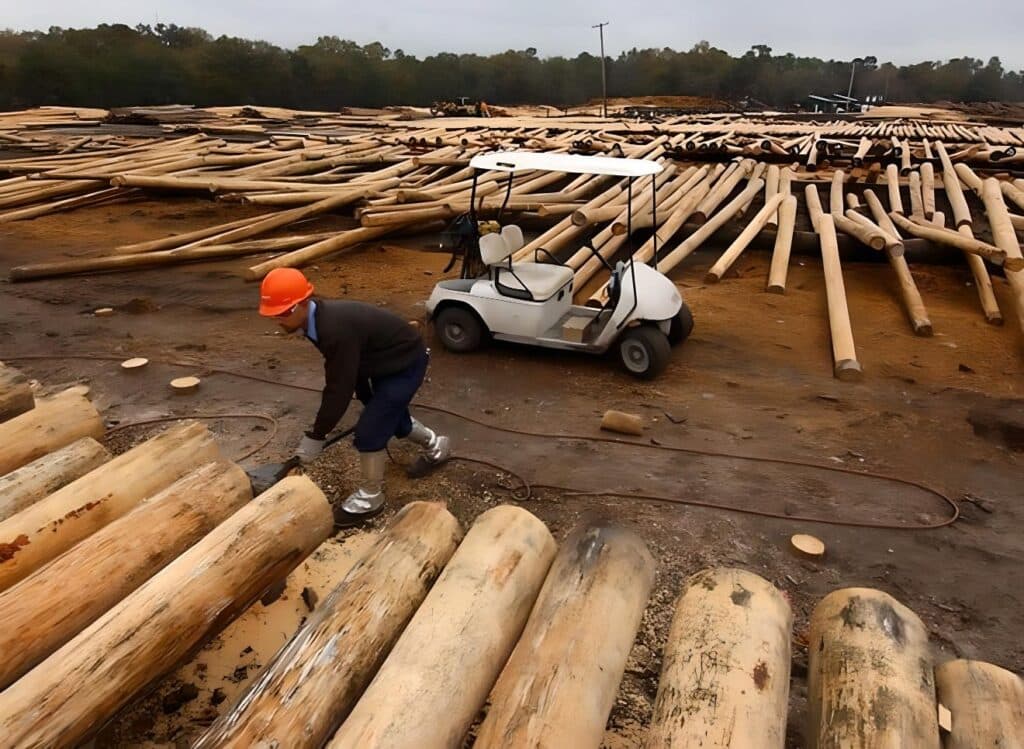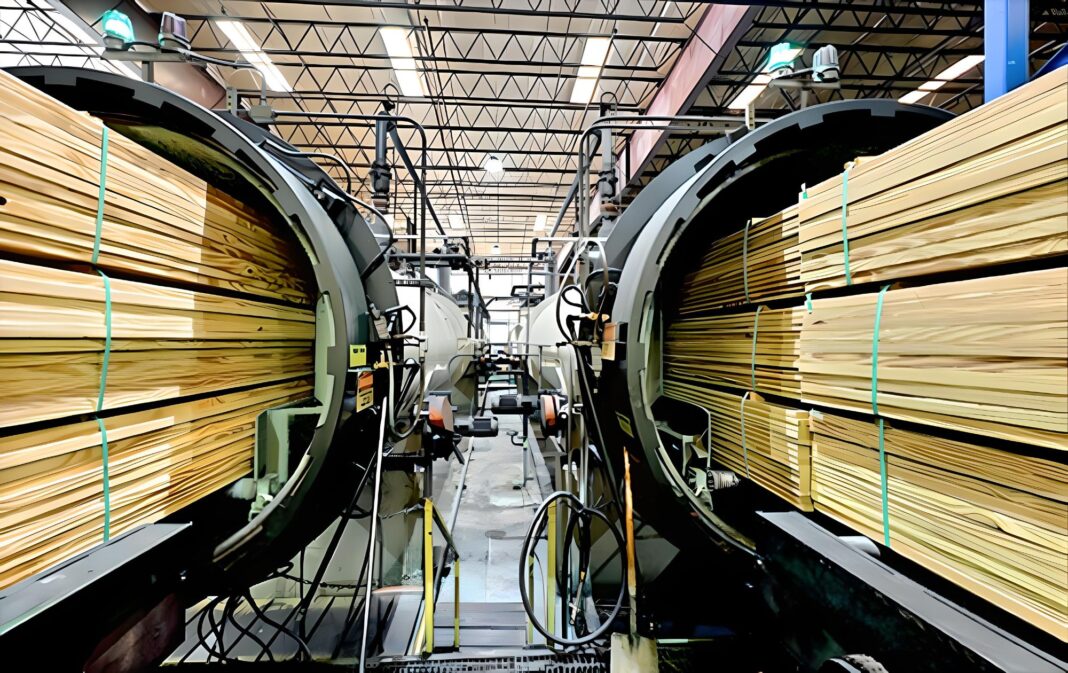
Sustaining plentiful supplies of timber was a major discussion point for the heads of three companies, which collectively form the world’s biggest producer of treated timber, during a recent meeting in Sydney.
Directors and senior executives of Koppers Industries Inc (KII) of Pittsburgh, USA, and the managing director of the largest European company in this field, Tarconord A/S of Denmark, were in Sydney to inspect facilities of the Australian group member, Koppers Australia Pty Ltd (KAP).
The US company KII also held its first board meeting outside the US, which was attended by chief executive Brooks Wilson.
KII president Bob Wagner said that taken together, the three companies formed the largest preserver of wood in the world, as far as poles, railway sleepers and lumber were concerned.
“One of the board discussion subjects was the environmental restrictions on the availability of timber in the US,” Wagner said.
“And through this, the price of wood is going up,” he said.
“The federal policy has been to save the owls and save the trees, so we’re having to pay more for our timber sleepers and poles.
“Right now, we are still short of sleepers in the US but generally, there are enough poles coming to keep our plants meeting the market.”
Wagner said that despite the recession, the American company had performed “rather well”.
Brooks Wilson said that while the price of sawn timber in Australia was also going up for much the same reasons, it had not affected the Australian company’s business, which was mainly in treated poles and Koppers logs.
“One of the things we recognise as an area of growth is providing timber poles for electricity distribution,” he said.
“The area around Australia has a huge part of the world’s population. This includes Indonesia, the Philippines and Bangladesh.
“This whole area is now going through an electrification program of the type we went through prior to World War 2.”

Wilson said the World Bank was pumping a lot of money into these counties, putting in power generation plants then distribution systems.
He said the hardwood poles were thinnings, and their harvesting stimulated further forest growth by giving bigger trees room to grow.
“We have a major pole plant at Grafton in northern NSW from which small poles can be loaded direct onto small ships brought up the Clarence River,” he said.
“We also have a pine plant at Takura, near Maryborough in Queensland, which is also operated on the ‘thinnings’ principle. This plant supplies Koppers logs but treated poles from this plant are being sold, including a recent large order from Bangladesh.
“We have a focus on trying to reach outside Australia and let this business grow. The basic timber business we are in is in an area of great need – this region to our north.”
Wilson said 10-15% of KAP earnings came from Asia at present, not just in poles but also in coal tar pitch – a major ingredient in aluminium manufacture. The company was also involved in the timber chemical business in southeastt Asia, Papua New Guinea, Fiji, New Zealand and Malaysia, the latter office covering north to Japan.
He described the market ahead for KAP timber products and preservative as No 1 in electricity poles, and No 2 in sawn timber, with treated pine being used increasingly for housing.
“In New Zealand, all pine used by their housing industry is, by law, treated,” Wilson said.
“And, as supplies of softwood diminish, more and more Australian indigenous pine is being used.
“We see a great potential for treating sawn timber. It is being used more and more widely for home construction, particularly as it is termite resistant.”






